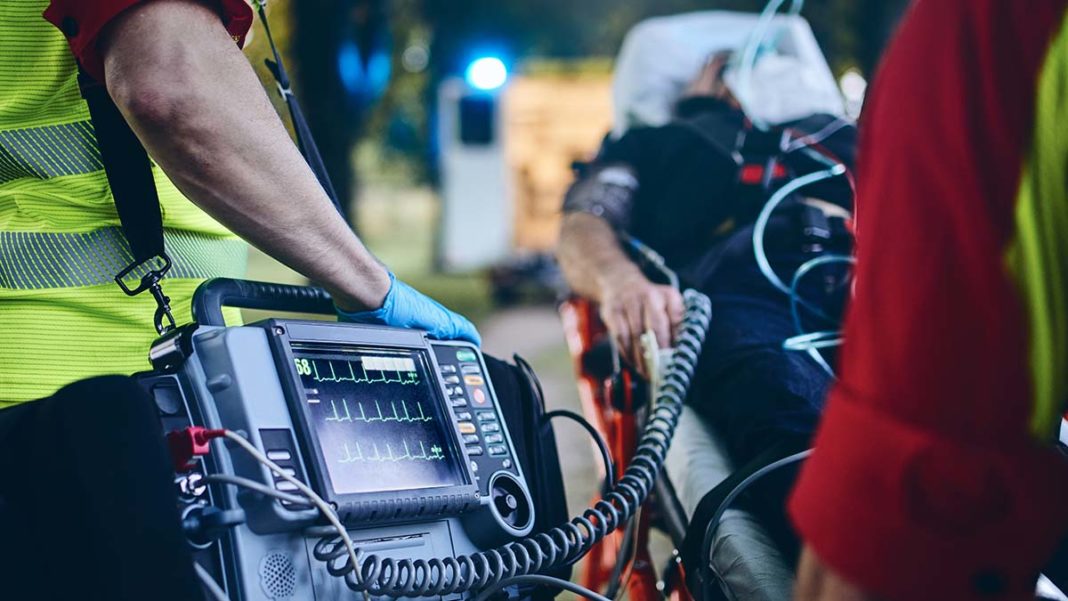Paramedics’ safety foremost
MANITOULIN—Last month, paramedics from the Kenora District Services Board waited outside the community of Omigaming First Nation for police support before responding to a 9-1-1 call for medical assistance. A young man died while waiting for emergency responders. Calls for emergency medical assistance on Manitoulin Island sometimes face a similar delayed response, but there is a reason why ambulances ‘stage.’
“Our paramedics don’t carry weapons, have no means of restraining people and certainly don’t have any Kevlar vests,” explained Paul Myre, chief of paramedic services with Manitoulin Sudbury District Services Board (DSB). “A paramedic’s safety is paramount in our world because you and I both know that if we’re going to a call and one paramedic goes down, then that means another ambulance.”
DSB’s official ambulance staging policy can be found online at msdsb.net (under Paramedic Services, Policies and Procedures) and was recently revised. “We’re very transparent,” Mr. Myre said. The deployment plan is online and talks about paramedic operations and contains a health and safety component. “It talks about how we work with our ambulance communications centre, what happens when a 9-1-1 call comes in, how many vehicles are on the Island, and what are our response strategies. Everything is in there.”
Deputy Chief Tim Beaman worked closely with the Ministry of Health and the communications centre, (the 9-1-1 communications centre in Sudbury), to develop the policy, said Mr. Myre. “Our policy, interestingly enough, would be aligned with the policy in Superior North and most likely the same one as in Rainy River and Kenora districts.”
A risk screening occurs at the dispatch centre when the call is taken, he continued. Some addresses may be flagged if the paramedic service has previously attended there and there was a threat of external violence on a paramedic. “There’s a red flag applied to the residence and each time there’s a 9-1-1 call that comes from the residence, the ambulances communications officer (also known as dispatch) will tell the crews about the potential risk in the house and the paramedics will choose based on their risk tolerance whether or not they’ll approach the scene.”
This is very clearly articulated in the policy, said Mr. Myre. “Personal safety is one hundred percent the priority in any emergency and I support that one hundred percent. The paramedics have to come first in any situation.”
It could be a chest pain call where there’s been a threat of violence, or there’s somebody on scene that’s intoxicated, or the residence is a known drug house where there is a history of weapons and/or violence, or the call taker hears some violence or mention of a weapon on the scene. “All of those things get factored into the decision-making,” he said.
It’s not every call that the paramedics stage. There has to be a potential or identified risk.
“We get vilified a lot, like the Kenora folks,” Mr. Myre added. “It’s a devastating call but I’ll tell you, there’s something else to that story. Those paramedics were staging for a reason. For them to stage, there has to be a potential threat. That’s the thing. It’s not just the community.”
In the Kenora case, the EMS had been previously attacked at that residence and so had called for police backup.
If something happened in Little Current, for example, and there was a threat of external violence against paramedics in general, maybe a threat that was made, it wouldn’t preclude paramedics from going to any residence in that community.
“We really have to be careful,” said Mr. Myre. “We’ve got to do our due diligence as well. We can’t just say, ‘I don’t feel safe in the community of Little Current so I’m not going to any call there.’ That just doesn’t happen. In fact, my paramedics tend to push the envelope and go into situations that they shouldn’t go into sometimes. I usually have to be the finger wagger and say, you have to be careful because everybody has to go home tonight. Everybody has to go home.”
“I think it’s important to understand that those decisions for the paramedics to stage is done in concert with the on-duty superintendent,” Mr. Myre said. “Their supervisor is aware and is communicating with the crews on the situational awareness. They’re always talking back and forth about their risk tolerance and then, at what point do they enter the scene. So, it’s not a siloed decision is what I’m trying to tell you. It’s not the paramedics not going there.”
Any delayed response to a call, or any complaint, triggers an immediate internal review, and that’s not something the paramedics can override. If there’s an excessive response to any scene, the paramedics have to document that and they must provide a reason. That report is reviewed by the deputy chief within 24 hours and then it’s escalated to either Mr. Myre’s office or the Ministry of Health if other follow-up is needed.





